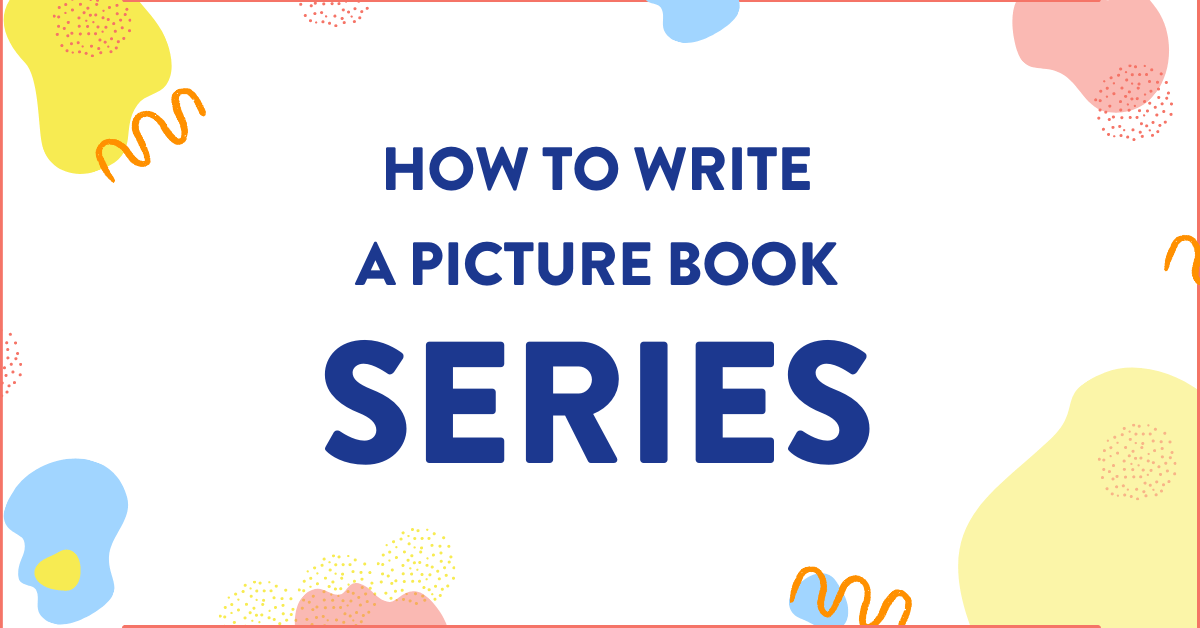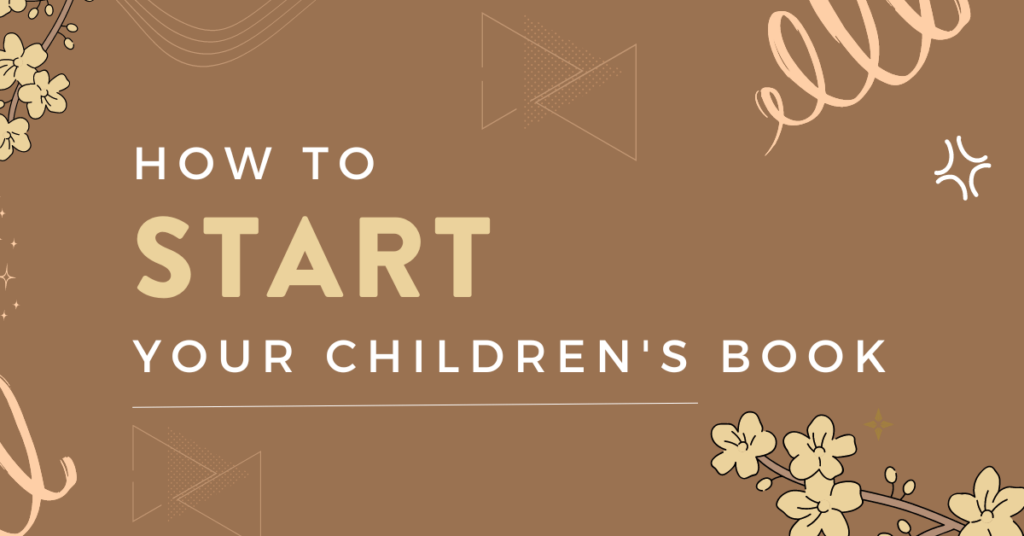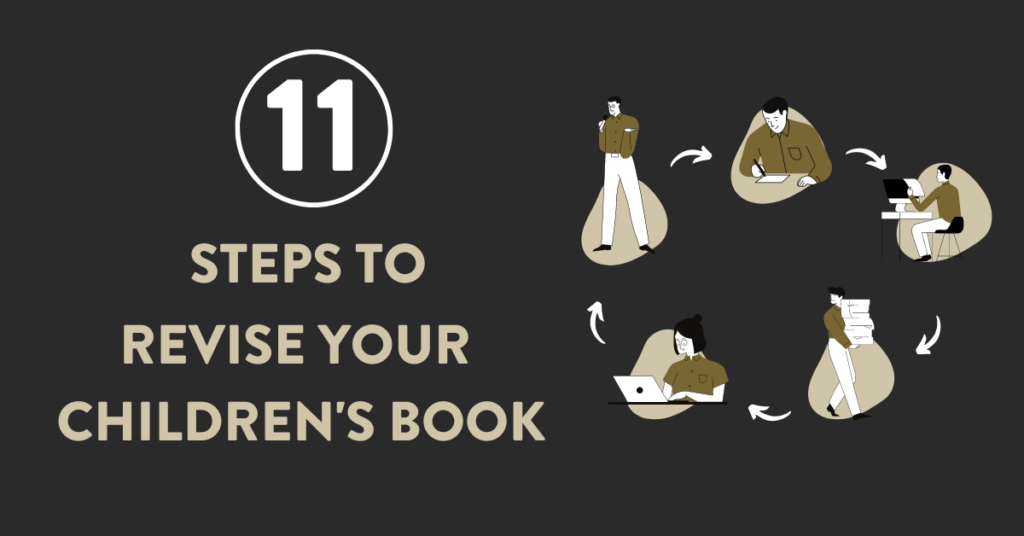
As an editor, I’ve helped a couple hundred authors with children’s book picture series.
What I do is give them advice about the series as a whole, and I also edit each book individually. So if you’re looking for an expert on this topic, you’re not going to find anyone better than me (okay, humble brag finished).
Now, I will say that about 50% of authors who come to me with picture books think their idea could become a series. It’s very common, so you’re not going to make an agent salivate if you say series — it’s kind of what everyone in the industry already expects.
Most publishers take the approach of publishing the first book only, and then if it sells super well, then they would be open to a sequel, and if THAT sells well, then you can start really thinking about it as a series.
Of course, if you want do go the self published route for your book, series do very well (because they’re easier to market), but then you do have the expense piling up of paying for all those illustrations.
Let’s get series-ous (see what I did there?) about penning an unforgettable children’s picture book series!
1. Making a Children’s Book Series
What makes a series … a series? Rather than just random books all written by the same author?
That’s a great question.
While it’s easy to start a single book that stands on its own, it’s more difficult to make sure multiple books all seem part of a unified whole. Much like building a puzzle, each piece must be distinct, yet when combined, they create a beautiful tableau.
Here’s are 5 ways to make that magic happen:
1. Consistent Characters
Example: “Curious George” by H.A. Rey.
George, the mischievous little monkey, is at the heart of every adventure, whether he’s getting into trouble at a chocolate factory or flying a kite. By keeping the main character consistent, children know who to root for in every story.
2. Familiar Setting
Example: “Brambly Hedge” by Jill Barklem.
This series thrives on the intricacies of the mouse community living in Brambly Hedge. Whether it’s winter or spring, the familiar setting of the hedge and its inhabitants provides a comforting backdrop for varied tales.
4. Recurring Lessons
Example: “Little Miss and Mr. Men” by Roger Hargreaves.
Each book delves into a particular trait or emotion, be it happiness, curiosity, or naughtiness. This thematic thread makes each book feel connected even if the central character changes.
5. Consistent Structure
Example: “If You Give…” series by Laura Numeroff.
Each book in this series uses a circular narrative structure. Starting with a simple action, it spirals into an increasingly elaborate chain of events, only to circle back to the beginning.
2. Characters Change in Series
Characters don’t change in a picture book series.
There are two types of series:
- Progressive Series: a plot line that takes you through a single story. Each book/episode tells only one part of that story. Think about a show like “Breaking Bad.”
- Episodic Series: At the beginning of each new episode, everything reverts back to the standard story elements. This is more like “The Simpsons.”
Children’s picture book series are all Episodic Series. That means with each book you start over from the beginning, with the original characters. They don’t apply something about kindness they learned in the previous book.
Although they grow and evolve in slight ways at the end of each book (perhaps they learn patience, for example), by the beginning of the next book they are back to their standard, reliable self.
If you find that you’re writing a progressive series, then you aren’t actually writing a children’s book series: you are writing a chapter book. Think of C.S Lewis’ Narnia Series — that seven book series is a Progressive Series, where characters change and evolve, and you should read the books in order rather than picking up any random one.
3. Chapter Book or Series
This is the most frequent question I get as an editor. Writers are unsure whether they’re writing a chapter book or a series, and I help them figure it out!
There are two ways to determine whether your idea is a chapter book or picture book series.
1. Take a look at character change:
- Chapter Books: Characters have more depth, experiencing growth or change throughout the book. There’s a clear development arc, and secondary characters also have significant roles.
- Picture Book Series: Characters are more static. While they may learn a lesson in each book, they start fresh in the next. The focus remains on the main character(s), with secondary characters playing minimal roles.
2. Take a look at your plot, whether it’s all one piece or separate small plotlines:
- Chapter Books: Often, each book in a chapter book series has a continuation of a larger narrative or theme, although each book has a self-contained story.
- Picture Book Series: Each book is usually a standalone tale. While characters and settings may remain consistent, the narrative doesn’t necessarily continue from one book to the next.
4. Balancing Consistency with Novelty
Children’s book authors writing a series are faced with a bit of a pickle: how do you keep each book feeling fresh and new while ensuring that readers feel right at home with each new installment?
In other words, how do we juggle the old with the new?
Here are three ways you can strike this balance:
1. Stick with What’s Familiar… to a Point
Your readers fell in love with your characters and setting for a reason. It’s like their favorite stuffed animal – comforting and familiar. But every once in a while, that teddy bear gets a new scarf or goes on an adventure.
Pro Tip: Keep the core elements of your characters the same. If Timmy is a curious turtle, let that curiosity lead him to different adventures. New city? New park? Space? The ocean depths? Let Timmy’s curiosity be the anchor, while the scenarios shift and change.
2. Evolve the Challenges
Sure, in Book 1, Sally might’ve been afraid of the dark. By Book 3, she’s conquered that fear, but now she faces a new challenge, like making friends in school. Challenges can grow with your characters and audience.
Quick Thought: Remember how Dora outgrew the map and backpack in “Dora and Friends: Into the City!”? It’s about evolving with your audience while staying true to your character’s essence.
3. Introduce New Characters
Everybody loves a good side character. They can add layers to your story without stealing the spotlight. Think about how characters like Luna Lovegood added a fresh spin to the “Harry Potter” series without overshadowing the trio.
Offer a new villain, a new sidekick, or a new friend.
If you need more help with how to write the first book in your series, take my children’s book course.
5. Outlining a Series
It’s not essential to outline a children’s picture book series because the stories aren’t cumulative, building on each other.
An outline prevents you from messing up the storyline or getting stuck in a narrative corner, but since each book is a standalone story, you really don’t have to do that.
Instead outlining, work on generating variations on your initial premise. For instance, a girl named Luna who lives in a land of darkness and creates lamps to help her neighbors see, then you can write these sequels:
Sequel Ideas:
- “Luna and the Symphony of Whispers”
Luna discovers that along with the visual magic of lanterns, sounds can also uplift spirits. She begins to craft wind chimes, with each chime representing a different emotion, creating a harmonious symphony that adds aural delight to her town. - “Luna’s Tapestry of Dreams”
Luna starts weaving beautiful tapestries that, when draped over sleeping residents, give them sweet dreams. Each pattern represents different dreamscapes, showing Luna’s exploration of the unconscious mind and the power of pleasant dreams. - “Luna and the Enchanted Garden”
Our inventive heroine turns to nature. She cultivates a garden where each plant represents an emotion or a dream. As the plants grow, they have enchanting effects on the town’s residents, teaching Luna about nature’s healing powers.
It’s a fantastic idea to try to come up with 10 – 15 of these variations, and then choose the top 3 to actually write out.
FAQ for a Children’s Series
1. What age group should I target with my series?
Answer: That depends on your story and its complexity. Board books target ages 0-3, picture books are usually for ages 3-8, early readers can range from 5-8, while chapter books aim at 6-10-year-olds. Consider the maturity of your content and the reading level.
2. How long should each book in my series be?
Answer: For picture books, typically between 500 to 1,000 words. However, chapter books can range from 4,000 to 12,000 words. Always consider the attention span of your target age group.
3. Do I need to have the whole series plotted before writing?
Answer: Not necessarily, but it’s helpful to have a general roadmap. This ensures consistency and provides a clear direction, but there’s also room for organic growth and change as the series evolves.
4. Can my main character age throughout the series?
Answer: While some characters in children’s book series remain age-static (think Nancy Drew), others can age and grow. It’s your call, but remember that if your characters age too much, your original readers might outgrow the series. My advice would be to have your character remain age-static.
5. Should all books in the series have the same illustrator?
Answer: It’s ideal, as it ensures visual consistency. However, there have been successful series with multiple illustrators. If you change, ensure the new illustrator maintains the spirit of the original artwork.
6. Can each book stand alone, or should they be read in order?
Answer: I would suggest making each book stand alone. Most readers will not read them in order, and you don’t want to confuse a reader who is coming to your series for the first time.
7. Is there a ‘magic number’ for how many books should be in a series?
Answer: Not really. Some series have three books, while others go beyond fifty. Focus on the quality of the narrative, not quantity. When the story feels complete, it might be time to wrap it up.
***
Once you write and revise the first book in the series, we’ll help you publish it.
Bookfox Press helps authors with illustrations, formatting, copyediting, and ISBNs.
It’s the easiest and fastest way to get a fantastic children’s book in the hands of young readers.



